The spring is here and my potted vegetable plants are doing great! Another few weeks and the time will arrive to replant them outside, mostly in large pots on the deck, but few will find their way into the ground, somewhere in the backyard. This year I have been very selective growing just what we like the most: peppers and tomatoes! I have got 16 plants of various heirloom tomatoes and 7 plants of peppers: Italian long sweet curly peppers, “Vrtka” Serbian curly sweet pepper and hot Spanish Serrano pepper. I also got 1 plant of selen or a leaf celery! An interesting story goes with this simple but beautiful plant; this is the plant that I remember from my childhood, my mother commonly used it in soups and I recall we called it selen. As I grew up and moved away from home that plant was lost on me. Most of the time I ate at the restaurants and after I moved to Canada I haven’t seen it anywhere, so I just lost track of it. This plant is a variety of celery, but it does not have thick stalks. Parsley kind of looks like it, but is different and has distinctly different flavour. Selen gives soups really unique and recognizable aroma. I totally forgot about it and then couple of years ago by stroke of luck I actually found it! I was talking to my elderly Italian neighbor, she is Calabrese, and she used the term “sedano”, referring to one of the plants in her vegetable garden. That sounded awfully familiar to me so I just said Selen!! Funny as that happens a lot, she doesn’t remember particular English word and then she uses Italian and often I actually understand what she is talking about. Ha, ha she always gets surprised by that. She showed me her vegetable garden and I was all smiles, there it was – selen! She gave me seeds and this year I am growing one myself! How good is that!

Ossobuco is Italian classic, on the list of most famous traditional dishes. It is richly flavored dish, a variety of beef stew. My first encounter with this dish was few years back during our ski-trip. Yes it was in la belle province of Quebec, one of very few places left that you can still feel love for good cuisine and compassion for good old traditional recipes. I cooked it many times and this is my favorite recipe adopted from master chef Greg Easter.
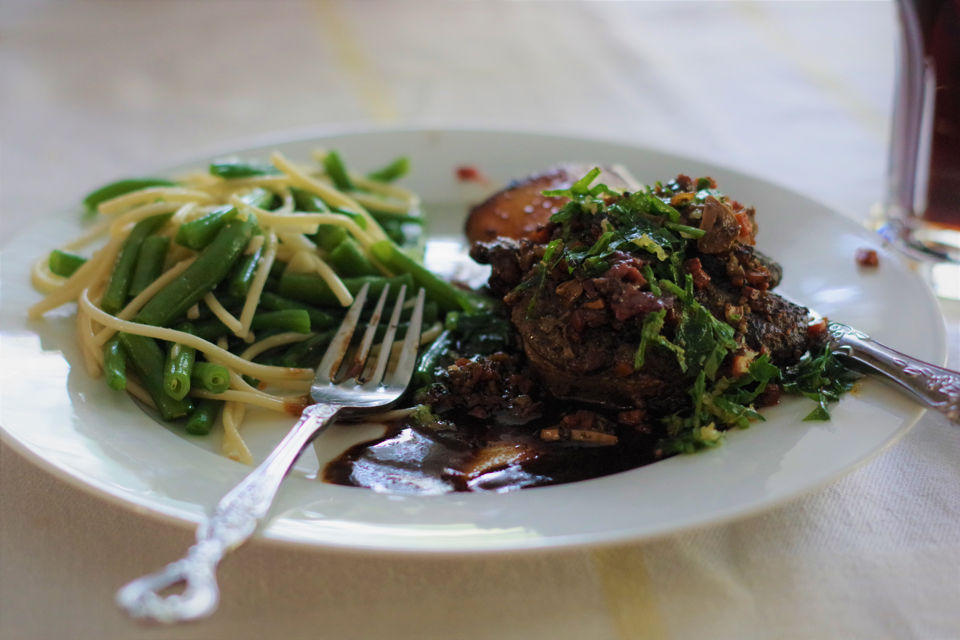
It is not a difficult dish to make, but it does take time. It is a tough meat cut with lots of tendons or connective muscle tissues and slow cooking at low temperature is the only way to turn it into a tasty dish. The original recipe calls for veal shanks, but I always made it with beef shanks. Veal shanks are hard to find outside of Quebec, but in my view the beef shanks are excellent substitute! The only other 2 suggestions I would have are as follows:
1. Be really aggressive with meat browning! Brown each piece of meat separately, on high heat 2-3 minutes on each side, watch it carefully but bring it to the border line of charring! This is the key to deep rich flavor the dish is known for.
2. For browning use the smallest sauce pan that you can fit the meat in. This is extremely important! After the browning you will put a mirepoix into a hot blazing pan, and if the pan is too big it will burn before you have time to react. Good luck and buon appetito!
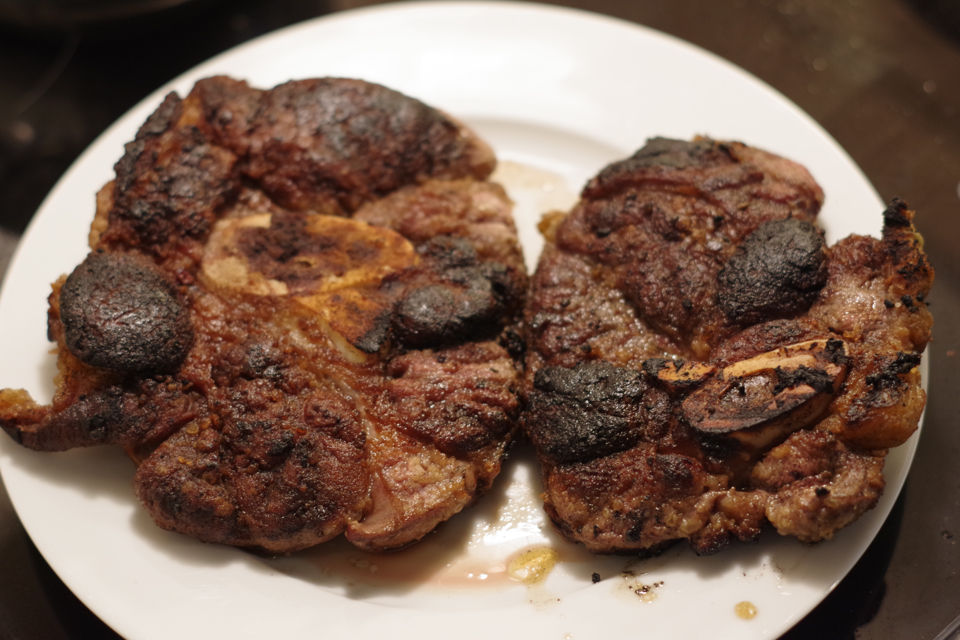
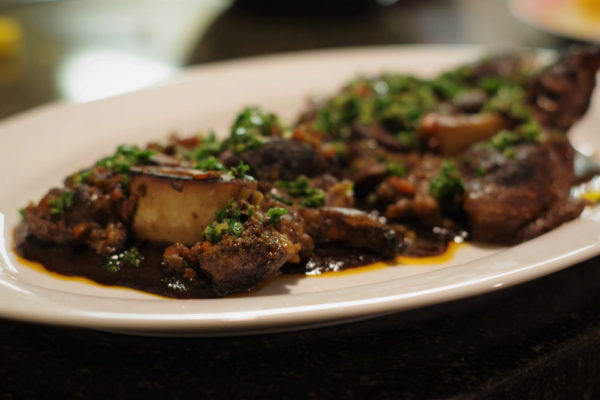
| Prep Time | 30 minutes |
| Cook Time | 3.5 hours |
| Servings |
servings
|
- 900 g beef shank, bone in
- 1 tbsp coarse sea salt
- 3 tbsp all purpose non bleached flour
- 3 tbsp olive oil
- 6-8 cloves garlic thinly sliced
- 80 g Italian tomato purée (passata)
- 1 tbsp balsamic vinegar
- 250 ml white wine
- 30 ml cherry wine
- 30 ml cognac
- 250 ml beef stock
- 1 1/2 tsp rosemary dried
- 1 tsp ground black pepper
- 2 tbsp Italian parsley finely chopped
- 1 clove garlic pressed
- 1 lemon zest to taste
- 1 tbsp extra virgin olive oil
Ingredients
Ingredients
Gremolata
|

|
- Use paper towels to pat the shanks dry.
- Prepare mirepoix, cut vegetables into 5 mm (1/4”) cubes.
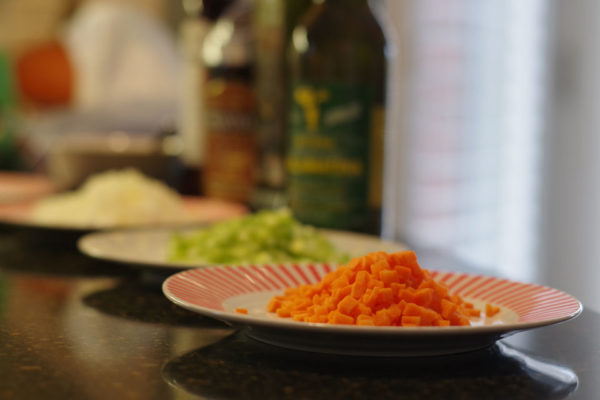
- Slice garlic thinly, set aside.
- Salt both sides of the shanks, salt generously and more than you think you need. This is the only salt added to the whole dish.
- Evenly coat the meat with flour. Turn it back and forth in flour trying to absorb as much flour as possible.
- Over high heat (10 out of 10) heat up sauce pan, as already explained it is critical to select the right pan size!
- Add olive oil and brown one piece at the time, browning it 2-3 minutes per side.
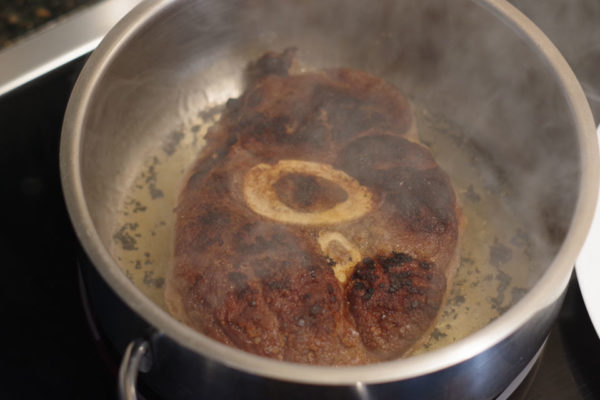
- After meat browning is complete add mirepoix to the pan, reduce heat to medium high (8 out of 10). Stir in 1 tbsp of balsamic vinegar. Use wooden flat spoon and try to deglaze pan bottom, cook 3-4 minutes until vegetables soften up.
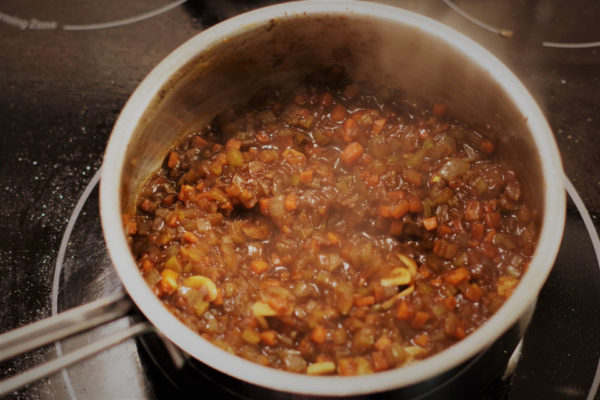
- Add tomato sauce and ½ of cut garlic, stir and cook for another 4-5 minutes.
- Add 30ml sherry wine and cook 1-2 minutes until dry.
- Add 30ml cognac and cook briefly until dry.
- Pour in 250ml white wine and 250ml beef stock, stir and bring to boil. Reduce heat to medium (5 out of 10) and simmer for 5 minutes.
- Preheat the oven to 160°C (320°F).
- Add one ladle of sauce to coat the bottom of a braising pan to prevent meat from sticking.
- Put the meat in one layer, side by side, in the braising pan.
- Slowly ladle the rest of the sauce over the top of the meat and by trying to pile up cooked vegetables on top of the meat.
- Spread the rest of the garlic on top of the meat.
- Sprinkle over the meat 1 ½ tsp of dry rosemary and freshly ground pepper.
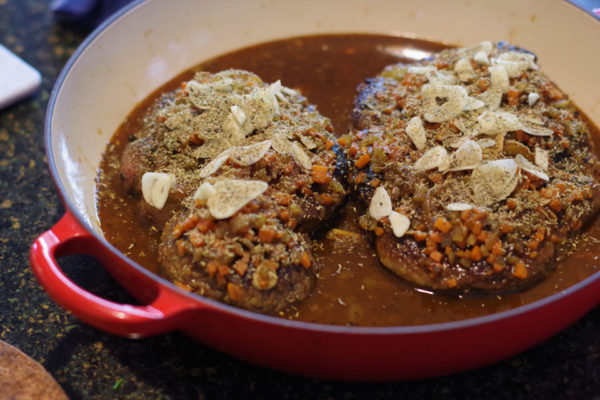
- Put the lid on the braiser and roast at 160°C (320°F) for 1 hour, then lower the temperature to 130°C (265°F) for 2 more hours. These are temperature for conventional oven, the fan is off.
- Carefully remove meat to the plate, set aside.
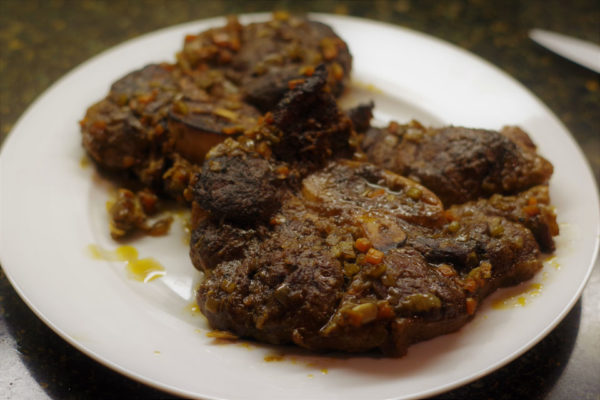
- Strain the sauce and transfer to medium size skillet. Reduce over medium heat (5 out of 10) until the sauce thickens up.
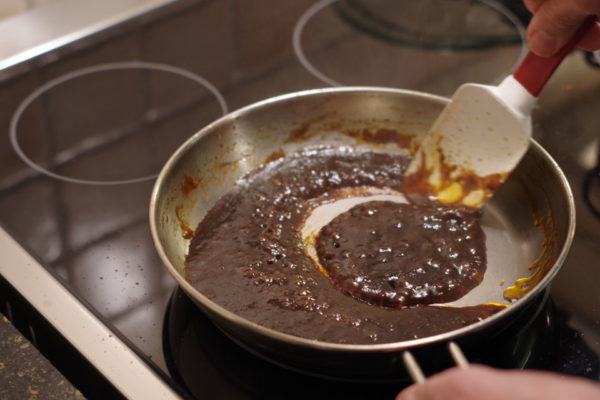
- Prepare gremolata.
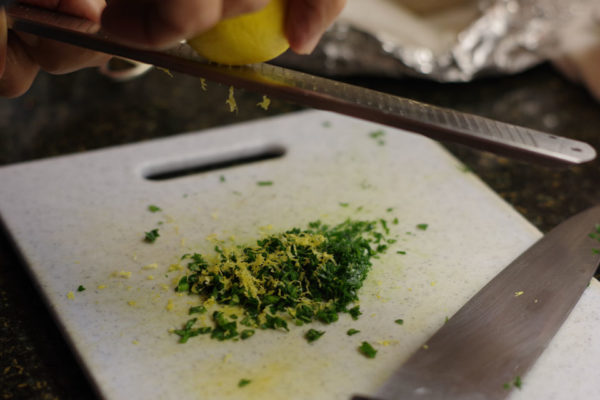
- Plate the dish by placing some sauce on the bottom, layer with meat and top up with gremolata.
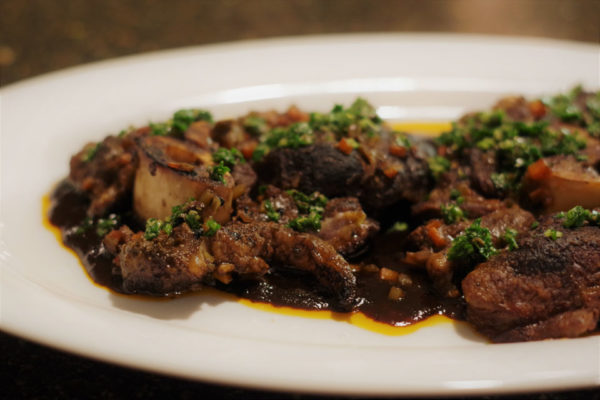


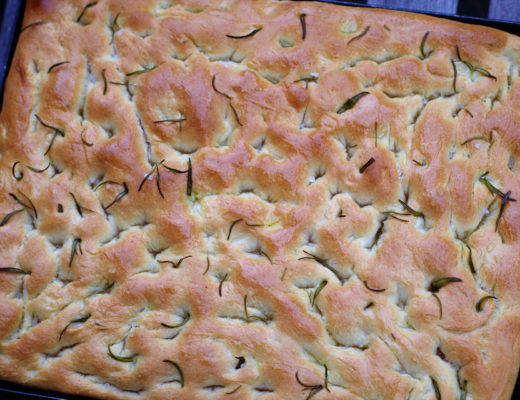
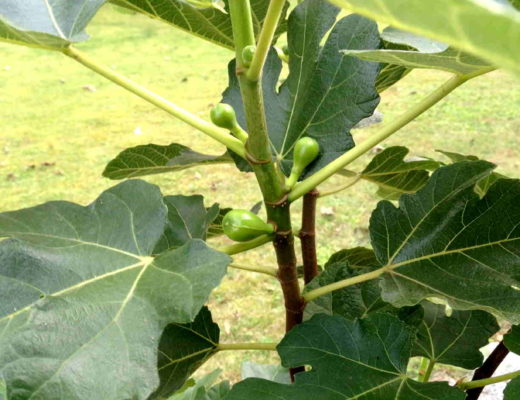
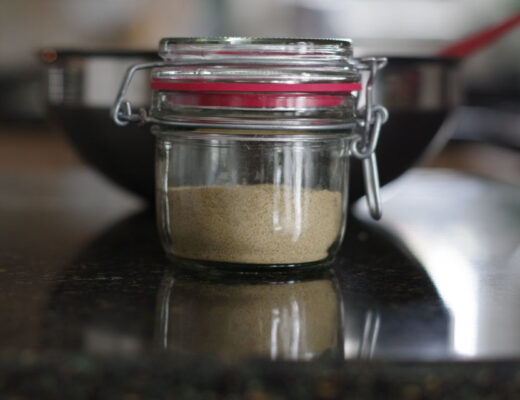
No Comments